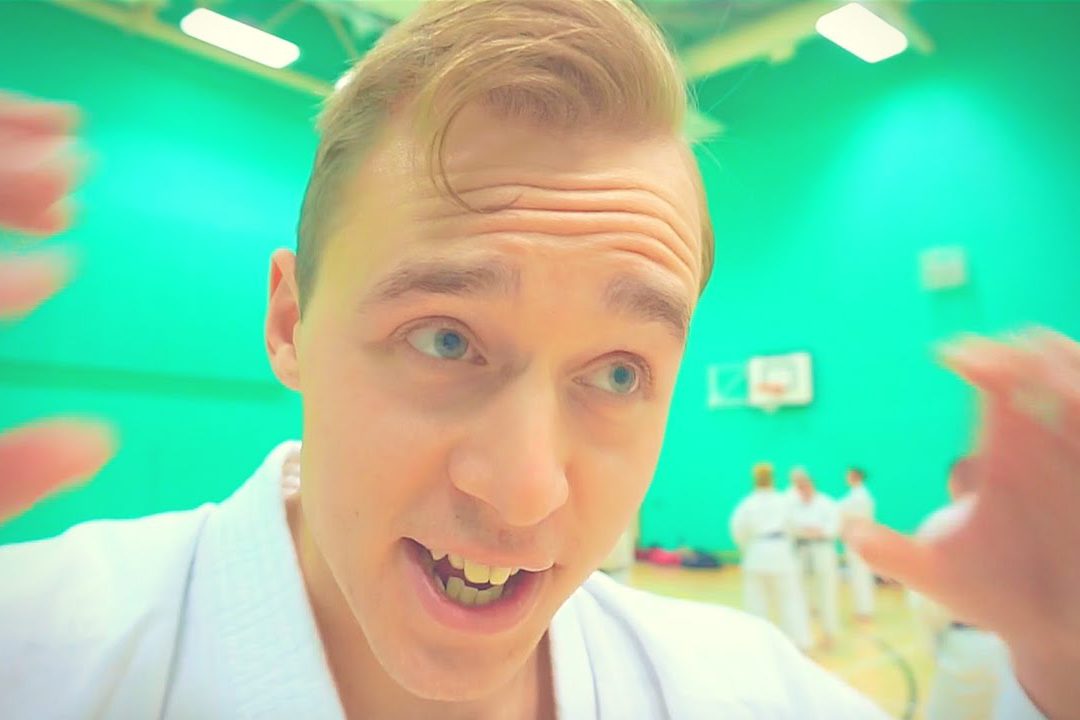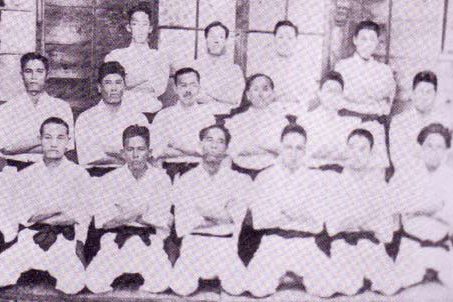Okay, here’s a thought:
What if we had to learn writing before talking?
What if we had to actually write down words and phrases before we could pronounce them or even understand them? What if babies were forced by some evil authority to write stuff before they were “allowed” to speak stuff? Sounds like a pretty crazy idea, right? Insane? Illogical?
But this is exactly what we’re doing in Karate.
Not because we’re crazy or insane though.
We’re just forced to.
I’m talking kata and bunkai, of course.
Let’s take it from the beginning: What is speech? The act of communicating through making sounds with the mouth. Easy enough. The problem is, sounds disappear after they’ve been said. They fade away. You need to repeat them for people to hear and remember them. Sounds, words, are not eternal in any way – except in our memories. But memories are not accurate recollections of facts. What has actually been said and what people remember have been said are often two different things. And memories also tend to fade away after a while.
Enter writing.
In the quest for a) recording and b) transmitting the information and knowledge of spoken word, people began writing stuff down. It was a logical evolutionary step from speaking (which, in turn, was a step above body language; ie grunting and pointing at stuff).
It’s pretty logical, right? Speaking came before writing. We know this. Your parents told other parents “Lisa said her first word yesterday!” before they said “Lisa wrote her first word yesterday!”. And if they didn’t, you’re probably some sort of freak.
However, although this natural order in the evolution of human communication (from pure body language to speaking to writing to Facebook) is pretty obvious to us, it seems to have gone almost completely lost in today’s Karate.
Kata.
Bunkai.
(Writing.)
(Speaking.)
You see, although we in the modern world of Karate generally tend to learn a solo form of techniques (kata) before we learn how to apply it in a 2-person self-defense context, the opposite is what we’re supposed to be doing. Karate was created with the opposite order in as base. In other words, we have somehow turned the natural order upside down. Which proves a dilemma.
Bunkai is speaking, and speaking came first.
Bunkai (self-defense) is, just like speaking, a way of physical communication (just a bit more barbaric) between two or more people. It is quite simply a way of taking a stand, expressing your wish of defending yourself in a physical altercation – trading fists and feet instead of verbs and adjectives (yes, yes, nouns too… wiseass). Kata, then, is the recorded solo re-enactment of this previously experienced process of physical communication. Recorded in a set form, for the main purpose of transmittance (and solo drilling) of the previously mentioned self-defense scenarios.
We would never teach a child to write before it could speak.
That would be stupid. It wouldn’t know what it was writing anyway. And it wouldn’t even be able to pronounce what it had written.
Hence, we are all children in Karate.
And we have no friggin idea how to “read” the “written” moves recorded in the “scriptures” we refer to as kata.
Because we never learned to speak to begin with.
We were brought up the wrong way.
You and me are like freaky children forced to writing without knowing how to speak. As if that wasn’t enough, we are then forced to read out loud what we’ve been writing all these years (on special occasions known as “gradings”), without knowing how the heck that is supposed to go. I mean, how is this word even supposed to be pronounced? Piece, peace, peas, peys… piiz…?
People show us hundreds of spelling versions, but there is only one correct way of pronouncing them all.
So which “spelling version” corresponds with the original intent of the technique “word” in question?
We are trapped.
And I’m not sure we can ever get out.
Funnily enough, Winston Churchill once described Russia as a “riddle, wrapped in a mystery, inside an enigma”. Some people claim he was actually talking about kata.
I tend to agree.
Now, of course I’m not the first person to think about things like these. Many other people before me have just gone “Truck this, I’m starting all over, this time from the right end!” and simply reverse-engineered the whole tradition of Karate (in other words, inventing, codifying and structurizing their own kata – based on traditionally proven techniques where the meaning is already known and thoroughly understood to them). Here’s perhaps the most successful example.
That’s cool. Really cool, even.
But personally, I’m not going that way.
I like a challenge.
So here’s where this post needs to end. To top it off, let me provide with two video clips of bunkai to the kata Seienchin.
Only one of them makes me jizz in my pants.
I trust you’ll know which one.
Keep keepin’ it real, guys.



13 Comments